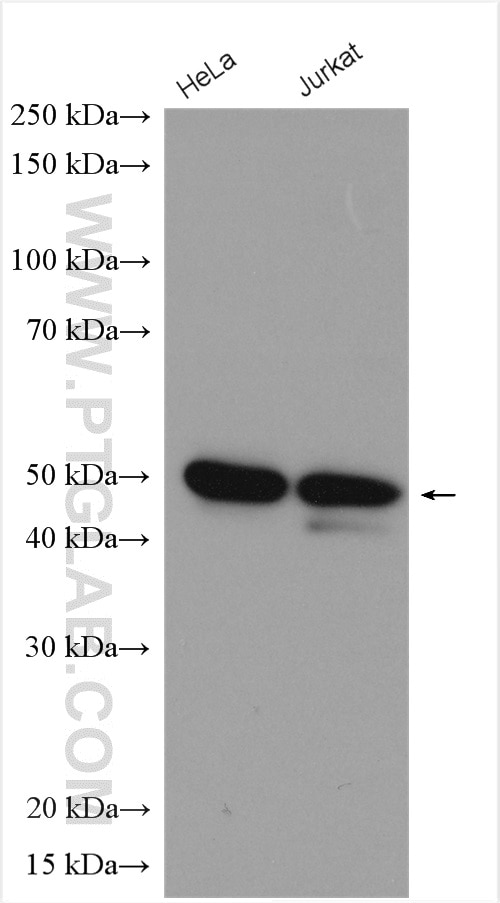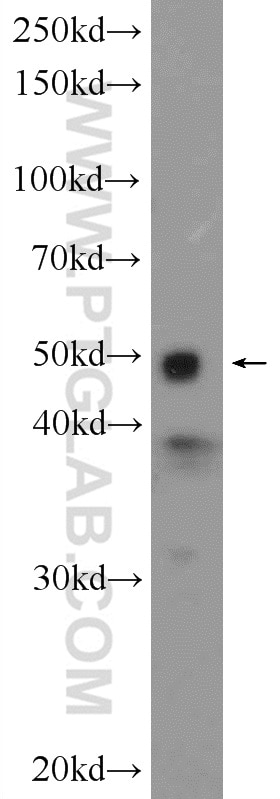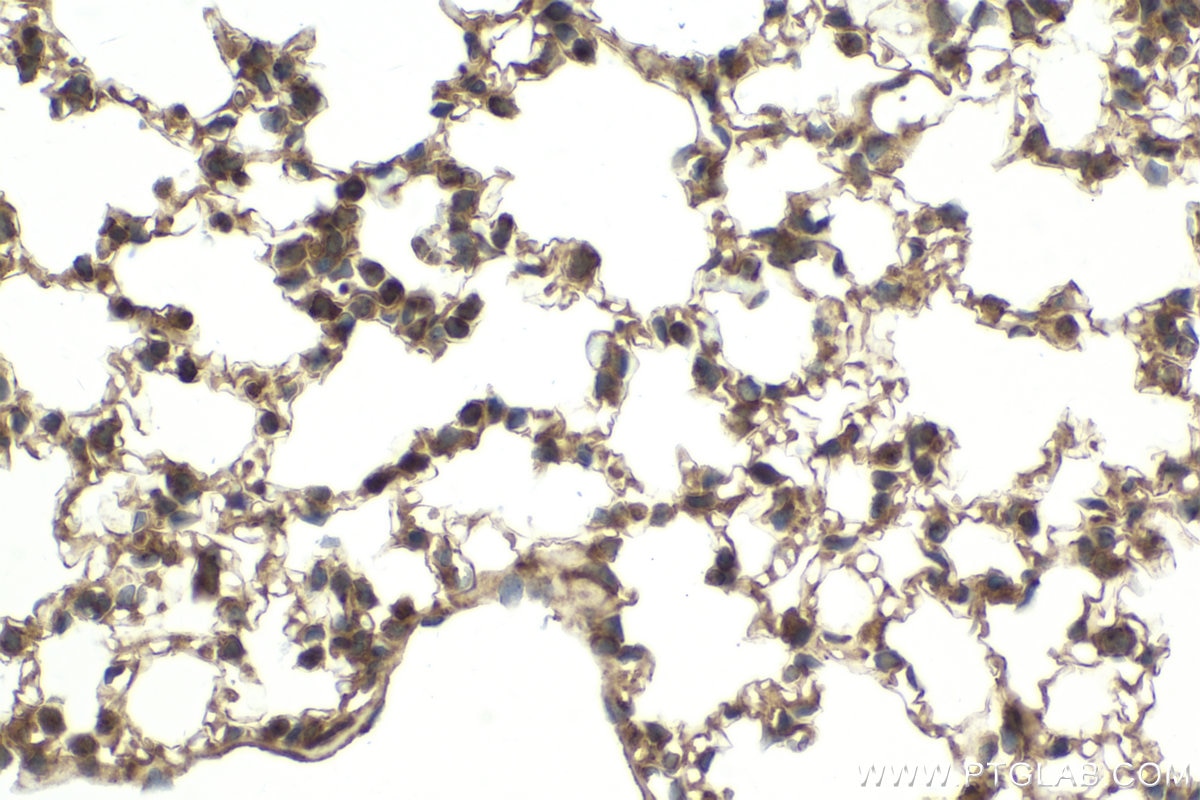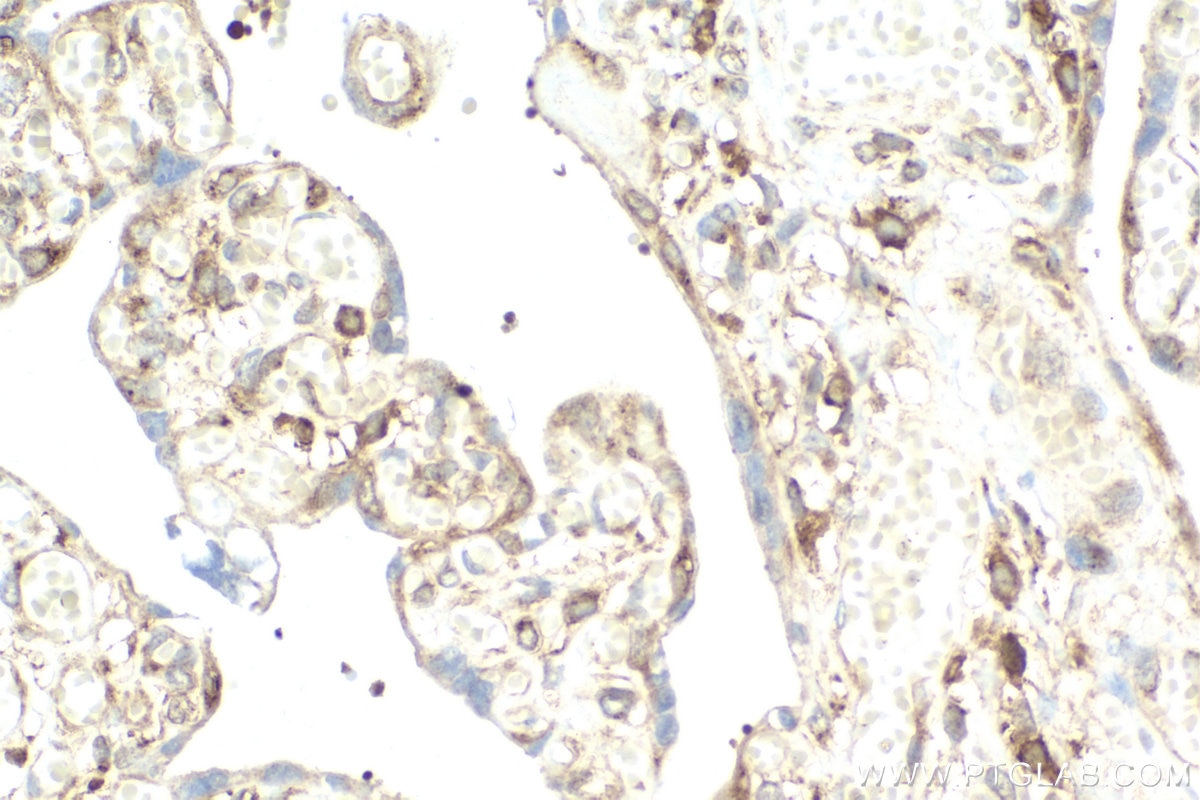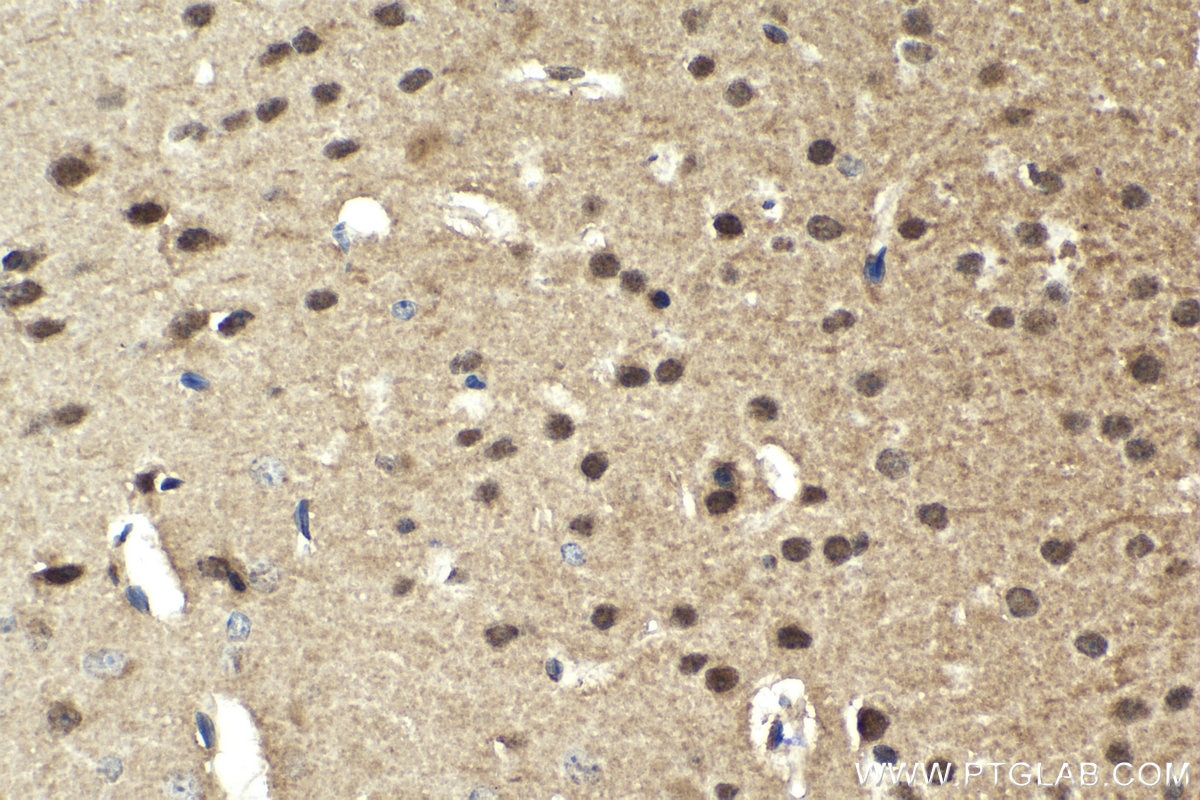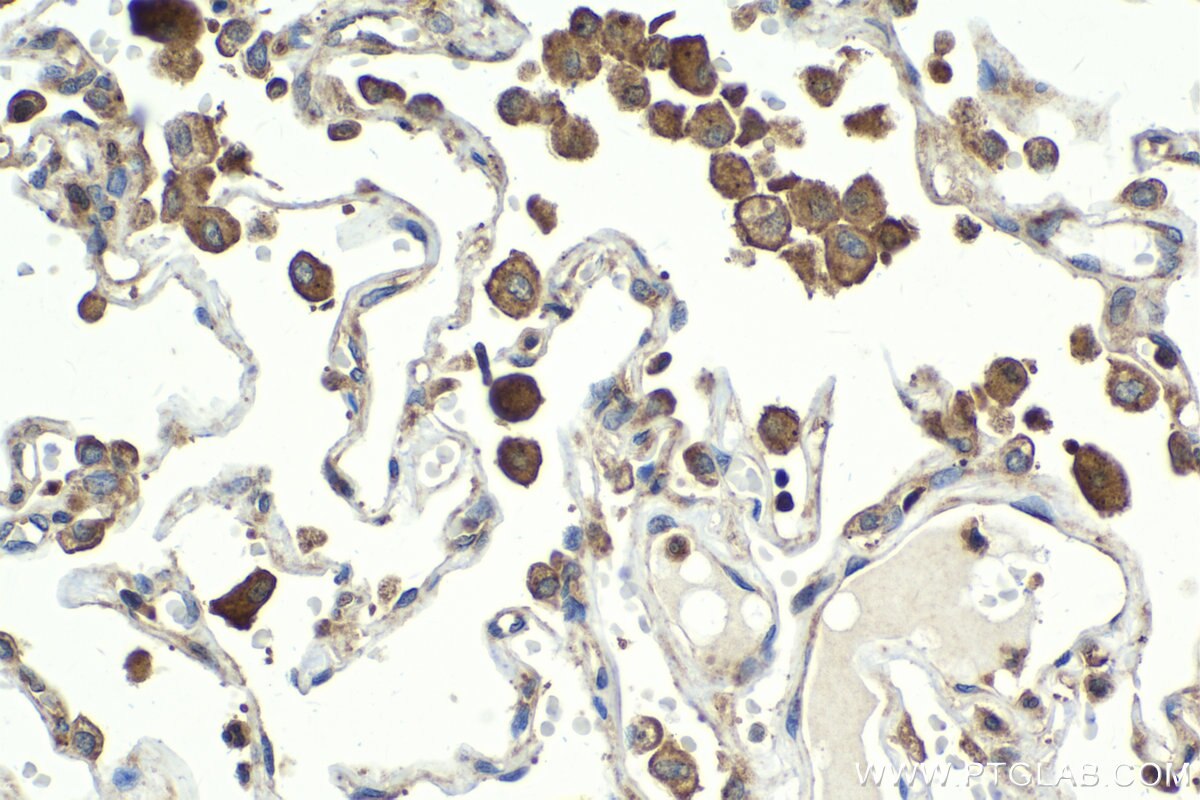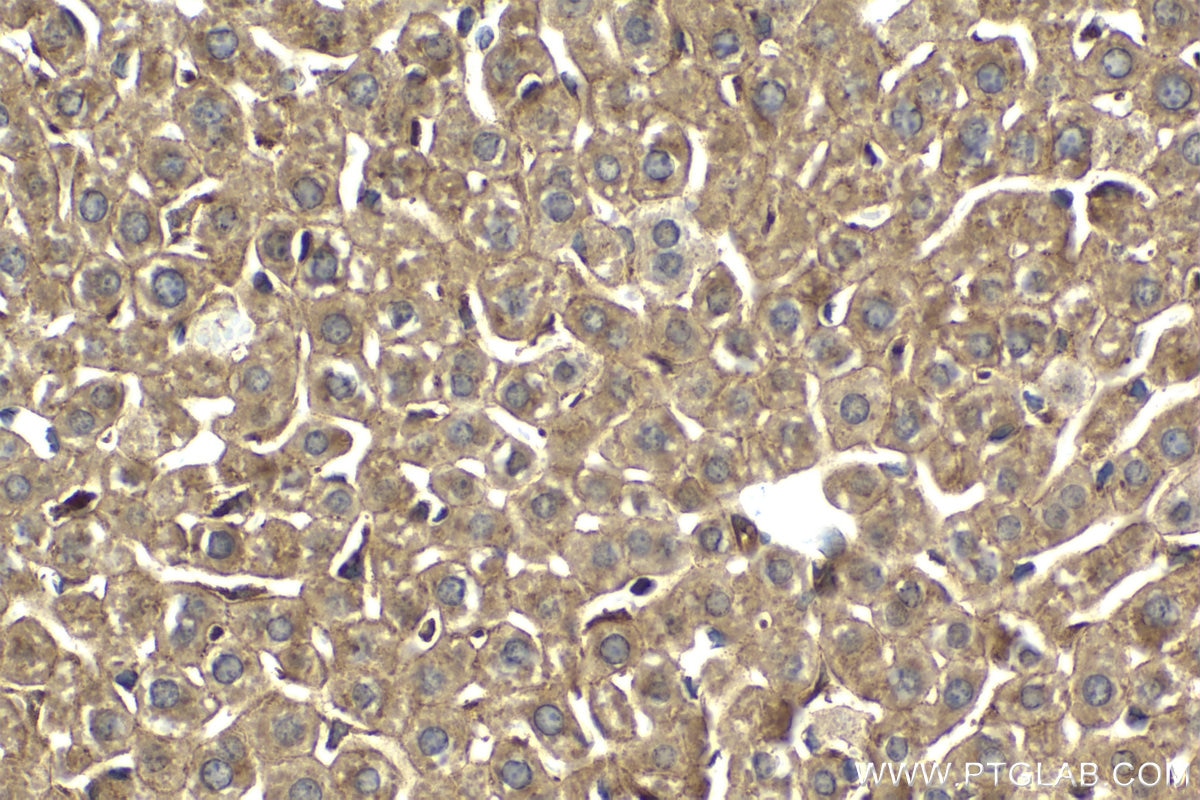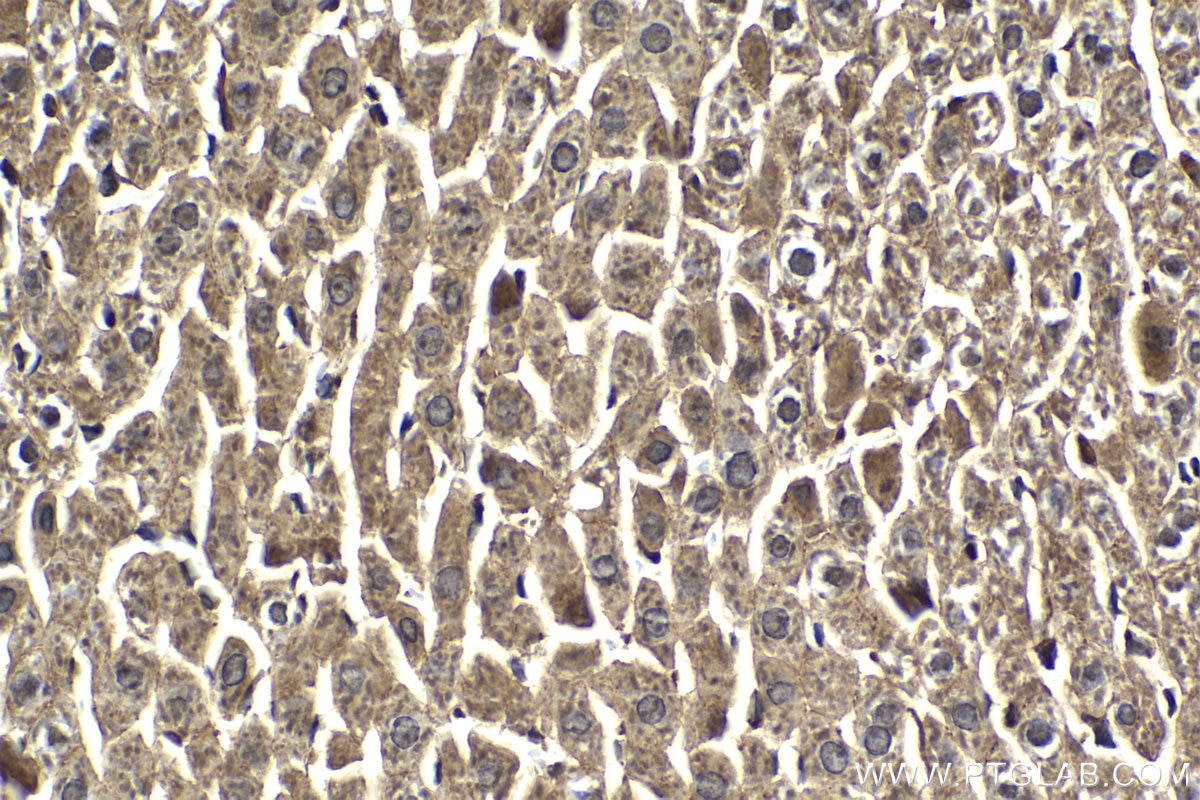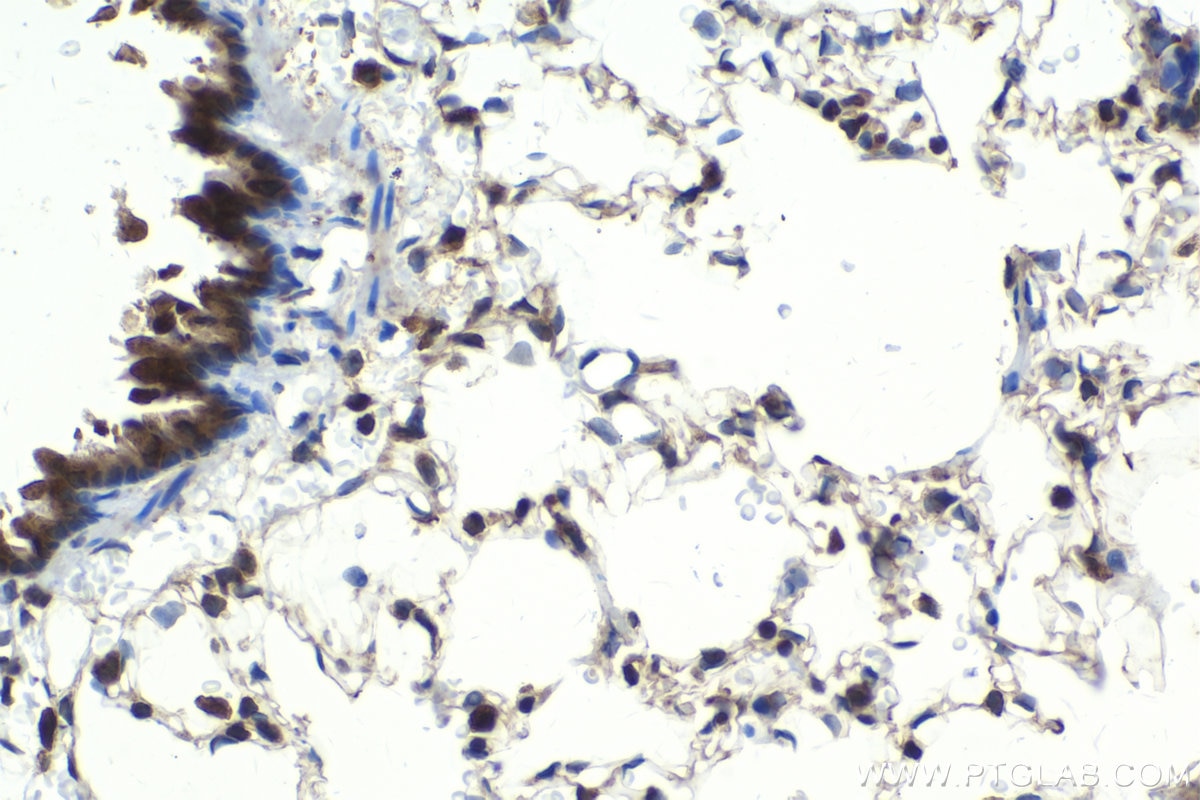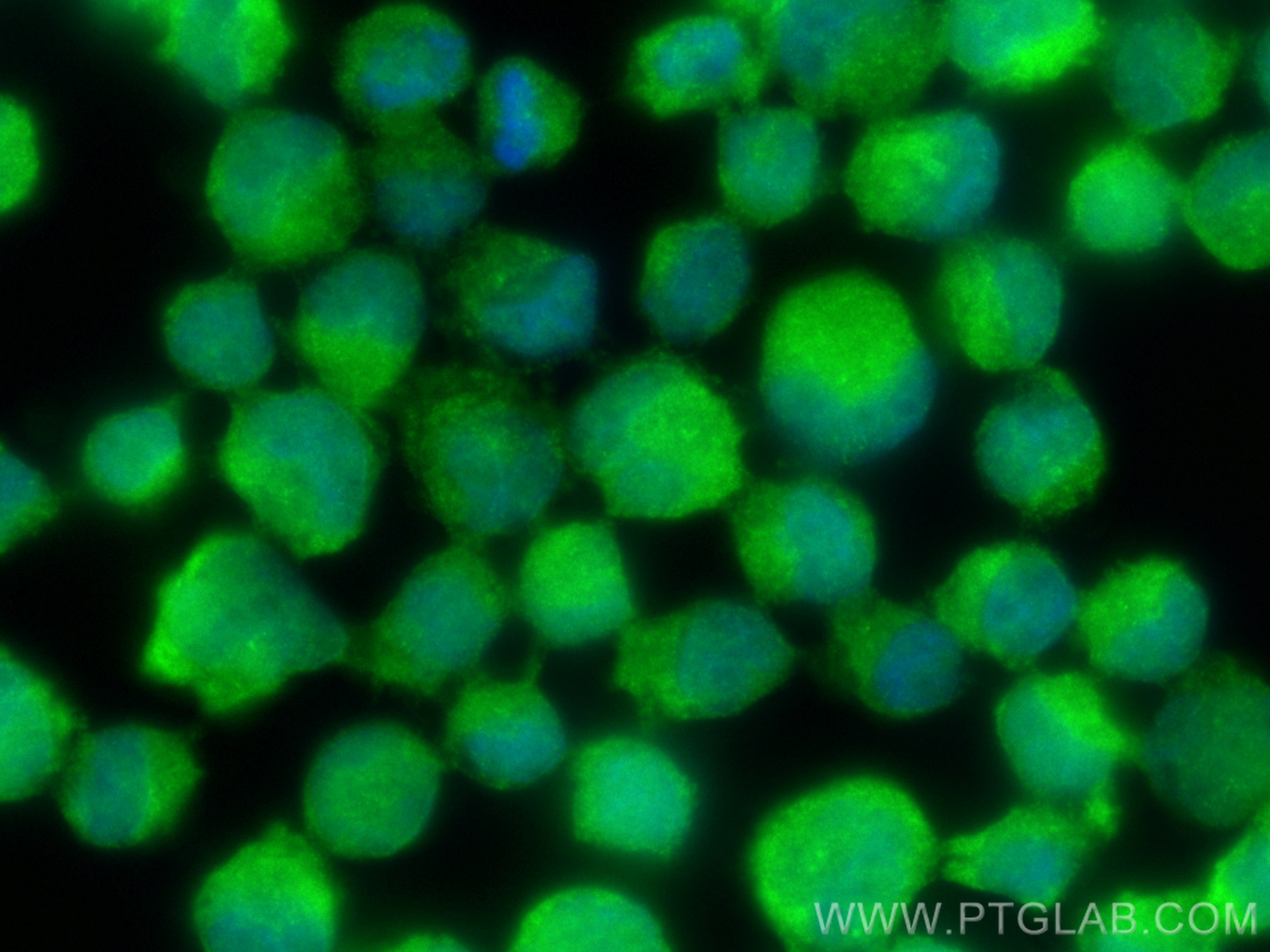- Featured Product
- KD/KO Validated
IKBKG Polyklonaler Antikörper
IKBKG Polyklonal Antikörper für WB, IHC, IF/ICC, ELISA
Wirt / Isotyp
Kaninchen / IgG
Getestete Reaktivität
human, Maus, Ratte
Anwendung
WB, IHC, IF/ICC, IP, CoIP, ELISA
Konjugation
Unkonjugiert
Kat-Nr. : 18474-1-AP
Synonyme
Geprüfte Anwendungen
| Erfolgreiche Detektion in WB | Jurkat-Zellen, Maushirngewebe |
| Erfolgreiche Detektion in IHC | humanes Plazenta-Gewebe, humanes Lungengewebe, Maushirngewebe, Mauslebergewebe, Mauslungengewebe, Rattenlebergewebe, Rattenlungengewebe Hinweis: Antigendemaskierung mit TE-Puffer pH 9,0 empfohlen. (*) Wahlweise kann die Antigendemaskierung auch mit Citratpuffer pH 6,0 erfolgen. |
| Erfolgreiche Detektion in IF/ICC | K-562-Zellen |
Empfohlene Verdünnung
| Anwendung | Verdünnung |
|---|---|
| Western Blot (WB) | WB : 1:500-1:3000 |
| Immunhistochemie (IHC) | IHC : 1:250-1:1000 |
| Immunfluoreszenz (IF)/ICC | IF/ICC : 1:200-1:800 |
| It is recommended that this reagent should be titrated in each testing system to obtain optimal results. | |
| Sample-dependent, check data in validation data gallery | |
Veröffentlichte Anwendungen
| KD/KO | See 4 publications below |
| WB | See 32 publications below |
| IHC | See 1 publications below |
| IF | See 1 publications below |
| IP | See 3 publications below |
| CoIP | See 2 publications below |
Produktinformation
18474-1-AP bindet in WB, IHC, IF/ICC, IP, CoIP, ELISA IKBKG und zeigt Reaktivität mit human, Maus, Ratten
| Getestete Reaktivität | human, Maus, Ratte |
| In Publikationen genannte Reaktivität | human, Maus, Ratte |
| Wirt / Isotyp | Kaninchen / IgG |
| Klonalität | Polyklonal |
| Typ | Antikörper |
| Immunogen | IKBKG fusion protein Ag13358 |
| Vollständiger Name | inhibitor of kappa light polypeptide gene enhancer in B-cells, kinase gamma |
| Berechnetes Molekulargewicht | 48 kDa |
| Beobachtetes Molekulargewicht | 48 kDa |
| GenBank-Zugangsnummer | BC012114 |
| Gene symbol | IKBKG |
| Gene ID (NCBI) | 8517 |
| Konjugation | Unkonjugiert |
| Form | Liquid |
| Reinigungsmethode | Antigen-Affinitätsreinigung |
| Lagerungspuffer | PBS with 0.02% sodium azide and 50% glycerol |
| Lagerungsbedingungen | Bei -20°C lagern. Nach dem Versand ein Jahr lang stabil Aliquotieren ist bei -20oC Lagerung nicht notwendig. 20ul Größen enthalten 0,1% BSA. |
Hintergrundinformationen
IKBKG, also named as FIP3, NEMO, IKKAP1 and IKKG, is specifically phosphorylate serine or threonine residues that are followed by a proline residue. IKBKG is regulatory subunit of the IKK core complex which phosphorylates inhibitors of NF-kappa-B thus leading to the dissociation of the inhibitor/NF-kappa-B complex and ultimately the degradation of the inhibitor. Its binding to scaffolding polyubiquitin seems to play a role in IKK activation by multiple signaling receptor pathways. IKBKG is a predominant 48-kD protein and an N-terminally truncated protein of 45 kDa produced in smaller amounts and translated from methionine-38.
Protokolle
| PRODUKTSPEZIFISCHE PROTOKOLLE | |
|---|---|
| WB protocol for IKBKG antibody 18474-1-AP | Protokoll herunterladen |
| IHC protocol for IKBKG antibody 18474-1-AP | Protokoll herunterladenl |
| IF protocol for IKBKG antibody 18474-1-AP | Protokoll herunterladen |
| STANDARD-PROTOKOLLE | |
|---|---|
| Klicken Sie hier, um unsere Standardprotokolle anzuzeigen |
Publikationen
| Species | Application | Title |
|---|---|---|
J Cell Biol Caspase inhibition prolongs inflammation by promoting a signaling complex with activated RIPK1. | ||
Cell Death Differ IKK-β mediates hydrogen peroxide induced cell death through p85 S6K1.
| ||
Mol Cell Proteomics Quantification of Dynamic Protein Interactions and Phosphorylation in LPS Signaling Pathway by SWATH-MS | ||
Front Immunol PCBP1 interacts with the HTLV-1 Tax oncoprotein to potentiate NF-κB activation | ||
FASEB J 3D human bone marrow stromal and endothelial cell spheres promote bone healing in an osteogenic niche. |
Rezensionen
The reviews below have been submitted by verified Proteintech customers who received an incentive for providing their feedback.
FH P (Verified Customer) (07-15-2025) | Used for caco2 cells and animal colon tissue
|
